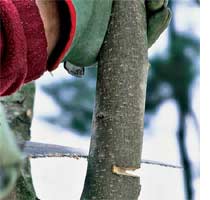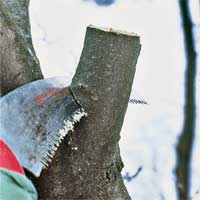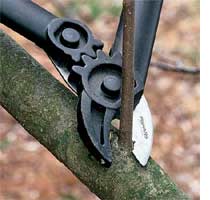How to prune a tree
We all know proper pruning can enhance the health and shape of a tree. But tangled branches that don't look like the neat illustrations in books can be daunting. So where do you begin?
Pruning stimulates growth and the ultimate goal is to encourage the tree to grow strong, healthy branches headed in the right direction. The best time for the kind of remedial pruning an established, long-neglected tree needs is winter or early spring, when active growth has not yet begun. Bare branches allow you to stand back and really see what needs to be removed.
Making the first cut
Any branch 8 cm or more in diameter requires a pruning saw and will fall under its own weight before the blade can get all the way through. This can tear good wood or bark and trap the saw if the branch is cut from below. To prevent this, start about 15cm from where you want the final cut to be, sawing partway through the branch or stem from the direction in which it should fall: away from the trunk for a vertical, on the underside for a horizontal. Then saw through from the other side, slightly above the first cut and sawing into it.
Once the larger section of the branch is cut off and moved out of the way, you can proceed to cut the remaining stub at an angle - just above the branch collar. The branch collar will eventually grow over the clean wound. It is always better to prune trees and shrubs in winter or early spring, as the cold weather helps prevent the trimmed sections becoming infected.
Remove any suckers or tree growth from the base of a tree, as these vigorous growing offshoots will eventually detract from the shape of the tree and siphon energy from more attractive, productive parts that may yield flowers or fruit. Hand pruners or loppers make quick work of thin suckers. Where they're too crowded or large to clip, use a pruning handsaw, taking care not to nick the bark on the trunk, which can open it to disease.
Cut away any smaller branches that interfere with the shape of the tree by positioning the blade just above he branch collar, a thickened area of wrinkled bark from which a branch emerges. Once a cut is made, hormones are released that cause the collar to grow over and seal the wound.
Remove smaller offshoots as they appear, as these vigorous shoots grow straight up and can crowd and shade a tree's interior, and it's easier to remove them while they're small.
this old house





